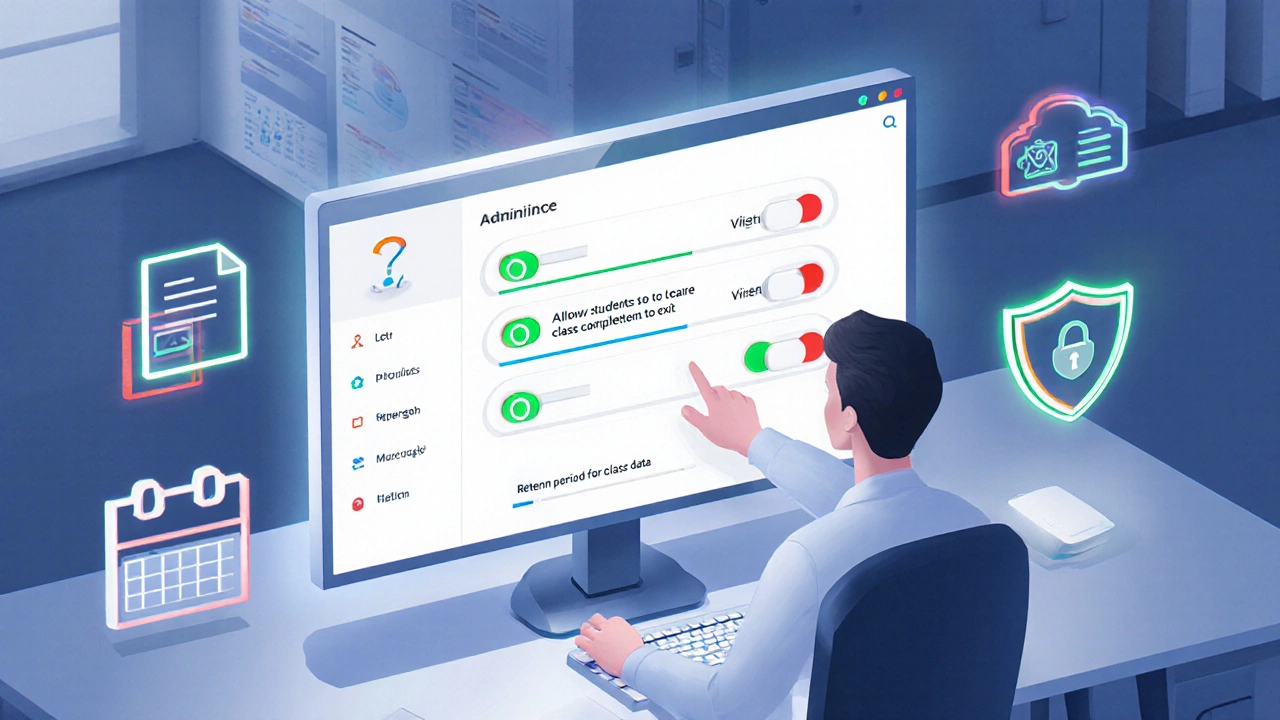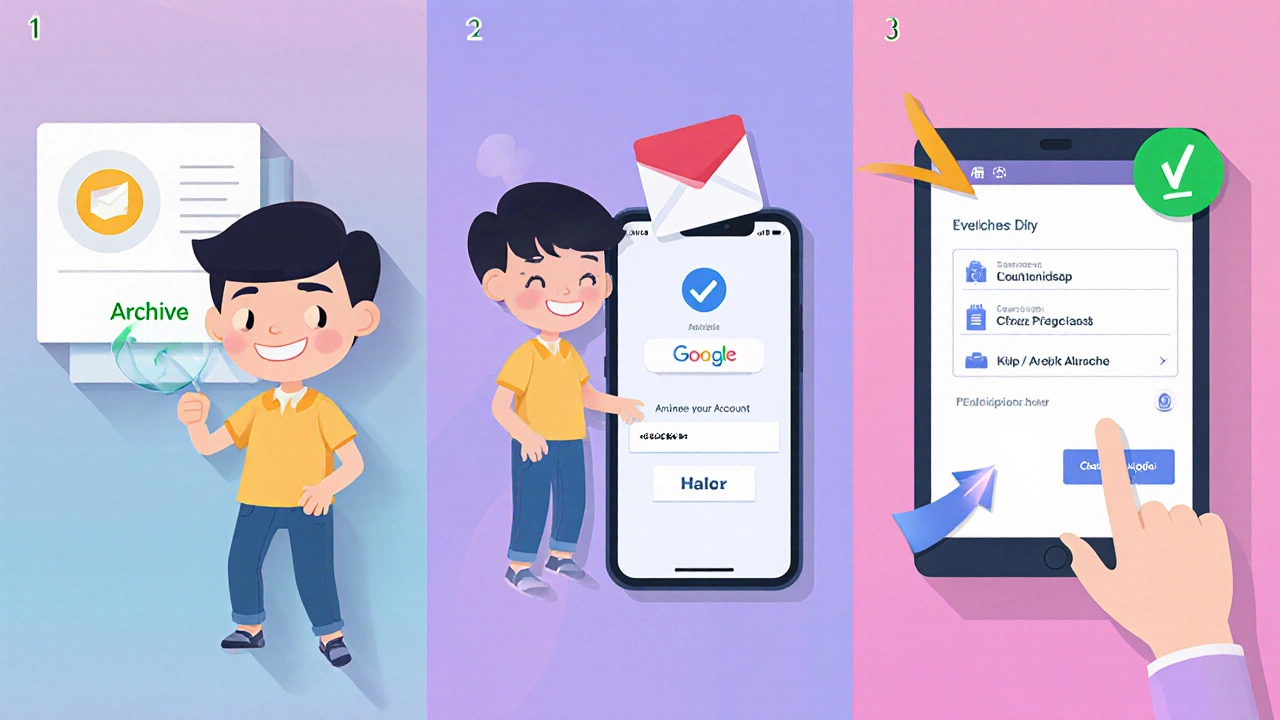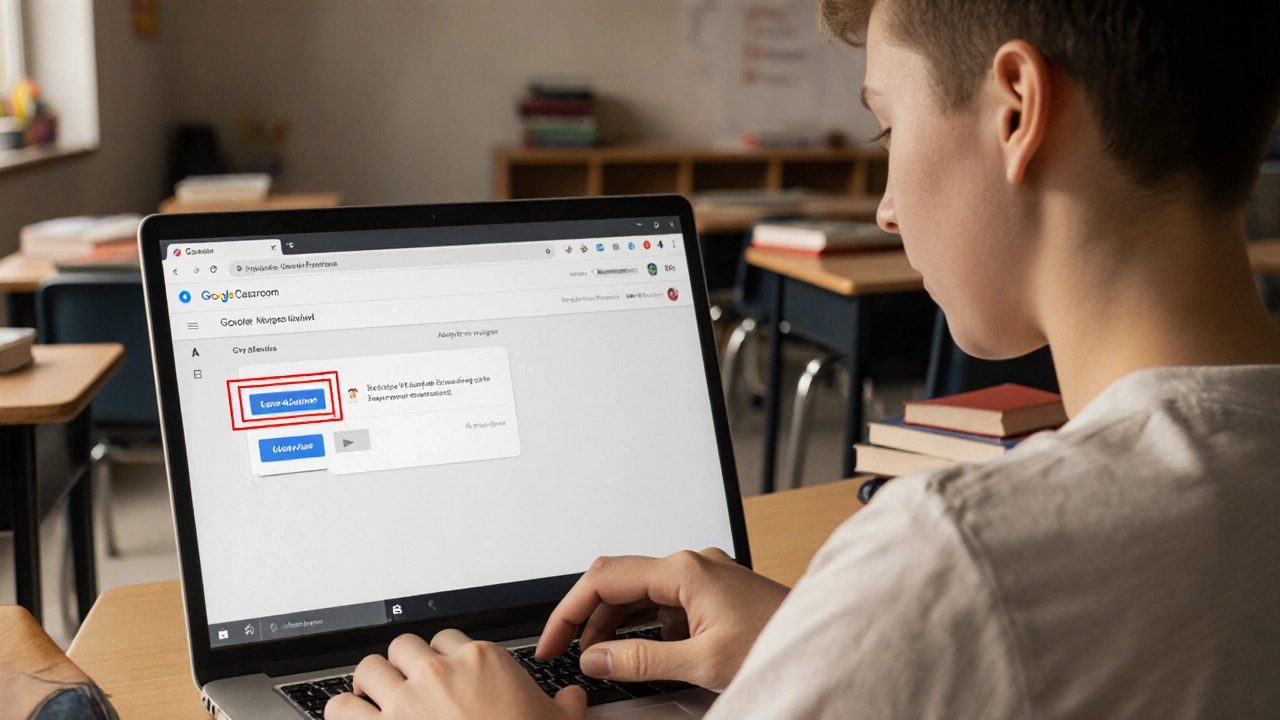Class Exit Diagnostic Tool
Why Can't You Leave This Class?
Your Diagnosis
How to Fix It
When you've identified your barrier, contact your school's Google Workspace administrator with these details:
- Class code and your enrollment date
- Whether assignments are complete
- Any specific policy mentioned in your school's handbook
Ever tried to click “Leave class” in Google Classroom, only to see the button disabled or an error pop‑up? You’re not the only one. Many teachers, students, and even parents hit a wall when they think they can simply walk out of a class, but Google’s ecosystem has built‑in safety nets that keep you tied to the classroom under certain conditions.
Google Classroom is a free web service that lets teachers create, distribute, and grade assignments in a digital environment. It sits on top of Google Workspace for Education, the suite of collaboration tools schools use for email, storage, and video conferencing. When those two layers work together, they enforce rules that can prevent a user from leaving a class.
Below we’ll unpack why the Google Classroom “Leave” button sometimes disappears, what admin settings are pulling the strings, and exactly what you can do to get out of a class without breaking school policy.
1. How Google Classroom Handles Membership
Every class in Google Classroom has three core roles:
- Teacher - owns the class, can archive or delete it.
- Student - enrolled via class code, email invitation, or bulk import.
- Co‑teacher - shares teacher permissions but cannot delete the class.
When a student signs up, a Google Workspace for Education account is linked to that enrollment. The platform records the relationship in the Admin console so it can enforce data‑retention policies, track assignment submissions, and keep the class roster accurate for reporting.
2. Why the “Leave” Button Might Be Disabled
Google doesn’t hide the button arbitrarily. Three main technical and policy reasons trigger a lock‑out:
- Active assignment submission - If you have pending work, Google blocks leaving to protect grading integrity.
- Admin‑enforced enrollment - District or school admins can set “forced enrollment” in the Admin console, meaning students must stay in the class until the course ends.
- Data‑retention settings - Some institutions keep all class data for a minimum of 90 days after graduation. Leaving early would violate those compliance rules.
These safeguards are especially common in high‑stakes courses like AP classes, language certifications, or any curriculum that feeds into state reporting.
3. The Role of Google Workspace Admin Console
The Admin console is the command center for every Google Workspace for Education domain. Under Devices > Classroom settings, admins find three switches that directly affect the “Leave” feature:
- Allow students to leave classes - When off, the button disappears for every student.
- Require class completion before exit - Forces students to finish all assignments.
- Retention period for class data - Determines how long a class stays in the system after it’s archived.
Only admins with the Classroom administrator role can toggle these settings. If your school uses a “single sign‑on” (SSO) provider like Azure AD or Okta, the SSO policy can also lock the button by syncing enrollment data from the student information system (SIS).

4. How to Request Removal or Exit a Class
If you’re stuck, follow these steps to get the issue cleared:
- Check for unfinished assignments. Submit or ask the teacher to mark them as “Done.”
- Contact your school’s Google Workspace admin (often the IT coordinator). Provide the class code and your email address.
- Ask the admin to either:
- Temporarily enable the “Allow students to leave” switch, or
- Manually remove you from the class roster via the Admin console.
- If the class is tied to a graduation requirement, the admin may need to issue a formal exemption before removal.
- After the admin updates the setting, refresh the Classroom page or clear your browser cache. The “Leave” button should reappear within a few minutes.
Remember, the admin’s priority is often data compliance, so they may ask for a short justification before unlocking the feature.
5. Workarounds When Admin Access Isn’t Available
Sometimes you can’t wait for an admin’s response. Here are three safe workarounds that don’t break policy:
- Archive the class on your end - Teachers can archive, which hides the class from the student’s dashboard while preserving data.
- Create a new Google account - Use a personal Gmail for unrelated courses, keeping the school account solely for official classes.
- Switch to a different class code - If the teacher offers a second section, you can join that one and ignore the first.
These methods respect the institution’s data‑retention policies while giving you a cleaner workspace.

6. Quick Comparison: Who Can Leave and When?
| Account Type | Can Leave Classroom? | Admin Override Needed? | Typical Use Case |
|---|---|---|---|
| Student (standard) | Only if admin setting is ON and no pending work | Yes - toggle “Allow students to leave” | Regular semester courses |
| Student (forced enrollment) | No, button hidden | Yes - admin must remove manually | AP/IB tracks, graduation pathways |
| Teacher | Can archive or delete class; cannot “leave” as a student | Not applicable | Course creators and overseers |
| Co‑teacher | Same as teacher for archiving; cannot leave as student | Not applicable | Joint‑teaching situations |
This table shows why a student might see a grayed‑out button while a teacher never does. The key lever is the admin’s “Allow students to leave” toggle.
7. Common Pitfalls and Pro Tips
Pitfall: Assuming the “Leave” button works the same across every school. Tip: Always check your institution’s policy page or ask the IT help desk first.
Pitfall: Deleting the class from your side. Tip: Only teachers can delete; if you try to remove the class from your view, you’re actually just archiving it for yourself.
Pitfall: Using a personal Gmail to join a school class. Tip: Schools usually block non‑domain emails; stick to your official school account for any class that counts toward credit.
By keeping these nuances in mind, you avoid unnecessary tickets and stay compliant with district data rules.
Frequently Asked Questions
Can I leave a Google Classroom if I have an incomplete assignment?
No. Google blocks the leave action until all assignments are either submitted or marked done by the teacher. This protects grading integrity.
What does “forced enrollment” mean?
It’s an admin setting that automatically adds students to a class and disables the leave button. Schools use it for mandatory courses or graduation tracks.
Can an admin permanently remove me from a class?
Yes. The admin can open the Classroom roster in the Admin console and delete the student’s entry. This action also removes the student’s data from that class.
Is there a way to keep my class data after I’m removed?
If the school’s retention policy is longer than the default 90 days, the class and its materials stay in the system even after you’re removed. You can still request a copy from the teacher.
Why does the “Leave” button sometimes appear but do nothing when I click it?
That usually means a background policy (like forced enrollment) is active. The UI shows the button, but the server rejects the request. Refreshing won’t help; you need admin assistance.
Got another question? Reach out to your school’s IT support or the teacher who created the class. They have the power to adjust the settings that keep you locked in.
